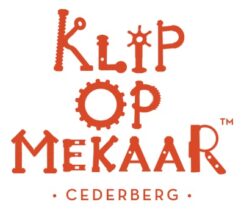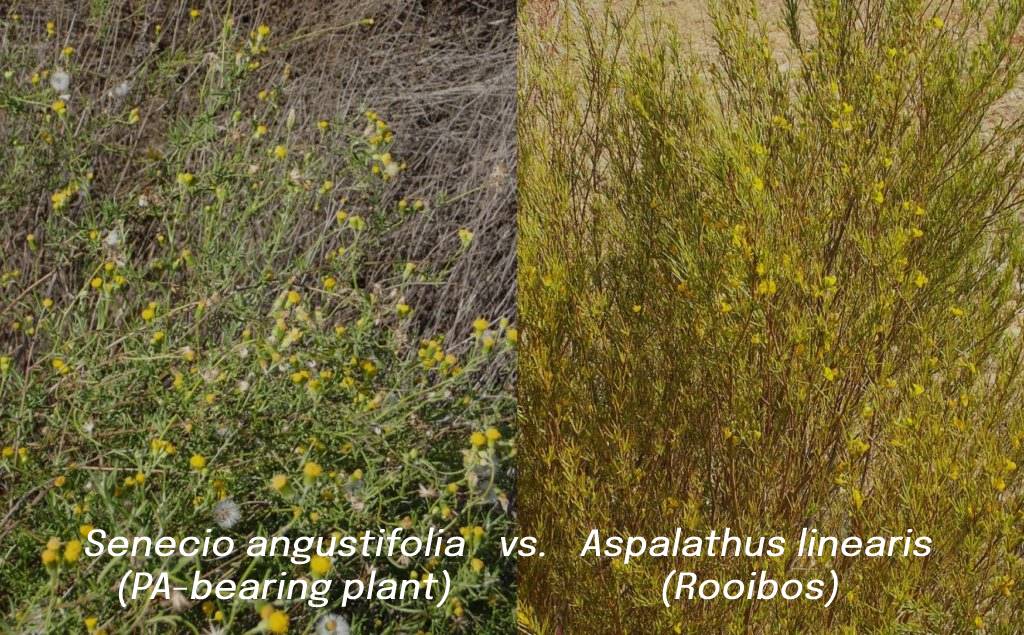As rooibos grows in popularity the world over, so investigation into its health-giving benefits are expanding, with many recent studies showing significant benefits thanks to a wide range of compounds found in rooibos tea.
With this growing interest in the plant from which our organic rooibos tea is made comes scrutiny of any potentially harmful compounds that may in some way end up in rooibos tea. This is of course only sensible – after all, if you’re drinking rooibos or using it in food of any kind (or even in cosmetics), you’d want to know that the raw ingredients are in the clear and beneficial.
Pyrrolizidine and Tropane Alkaloids (PAs & TAs) in Rooibos
Two of of the potential dangers that have been cited as being of concern in rooibos products in recent years are the occasional inclusion of classes of plant toxins known as Pyrrolizidine Alkaloids (PA’s) and Tropane Alkaloids (TAs). Commonly known as PAs and TAs, these have been a source of concern for some time in the global food and beverage industry.
PA-bearing plants have long been known to be the source of dangerous compounds and a concern in agriculture. For example, in 1920, there was an outbreak of food poisoning in South Africa, and research into the cause confirmed that the incident was due to the contamination of wheat flour with toxic PAs. In other areas of the world, PAs have been detected in a range of foodstuffs, including in honey and pollen dietary supplements, salad crops and cereals, herbal products, supplements, teas and products of animal origin.
This has also been the case for Tropane alkaloids (TAs), which have long been known to occur in a wide range of plants. These are found in the Brassicaceae, Euphorbiaceae, Erythroxylaceae – and importantly in the Solanaceae family, which includes tomato, peppers, chillis and eggplant and also a number of known toxic species of plants such as deadly nightshade and datura.
When found in low concentrations, as in those plants used for millennia as food sources for humans and animals, the danger of poisoning from TAs is not great. Indeed, among the many TA-bearing plants are in fact a wide range of medicinal compounds, which is the reason that plants of this type have long been used in traditional and modern medical applications. However, when incidental ingestion of high-TA plants occurs, this can cause serious and harmful effects. It is for this reason that TA-bearing plants are routinely avoided and removed in agricultural practice.
The rooibos industry has been aware of this for some time and has proactively taken measures to reduce the chances of PAs and TAs being found in the raw or processed products. Amongst the measures taken has been initiatives by the SARC to distribute information on the issue to producers, in order to assist them in understanding the issue and providing information on measures to take to avoid the inclusion of PAs and TAs.
How Do PAs and TAs End Up In The Food Chain?
For some time these compounds have been well-known to the agricultural sector, due to their being the source of outbreaks of poisoning of livestock and humans. The principal reason is usually because agricultural crops can become contaminated in fields and pasture with small amounts of plants of the types that produce PAs and TAs.
When PAs are involved, the poisoning is known as Pyrrolizidine alkaloidosis and is known by many other names such as “Pictou Disease” in Canada and “Winton Disease” in New Zealand, and is usually attributed to specific PA-producing species that grow as weeds amongst cereal crops – and in South Africa in our rooibos region, occasionally amongst rooibos plants. When this happens with TAs, the poisoning is known as anticholinergic poisoning.
When samples have been tested for PAs in the rooibos-growing region of South Africa, the plant responsible has been found to usually be Senecio angustifolius, which can be found within fields of rooibos that are not diligently cleared of weeds.
Samples tested for TAs in the rooibos-growing region have largely identified two main plant types as the source of contamination: the widely-occuring invasives associated with the Solanaceae family which are frequently found on agricultural land and on disturbed areas of ground, and the Euphorbiaceae, whose members occur naturally and many of which are indigenous to South Africa’s arid regions.
Regarding PAs, a problem particular to the rooibos industry is that a type of Senecio (which is a family of plants that contain some of the beautiful succulents that are typical to the drier regions of South Africa) looks similar to the rooibos plant. Or at least, it does does to the untrained eye.
As illustrated below, it’s this plant which frequently has been found to be the source of PAs in rooibos.
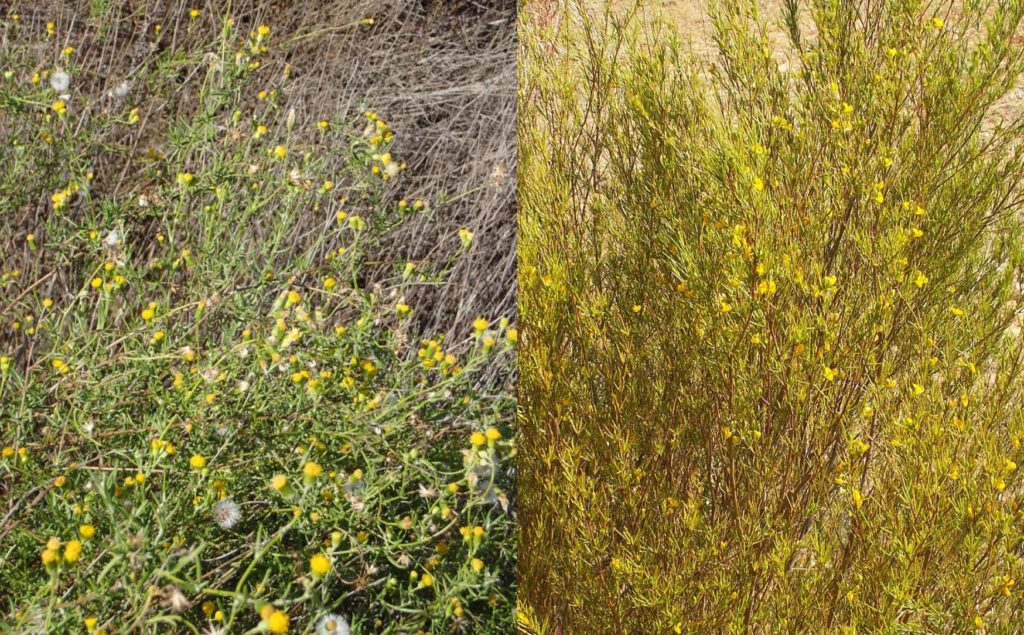
PAs and TAs in Rooibos – A Resolvable Challenge
The good news is that, happily, tests undertaken at Stellenbosch University have conclusively shown that the rooibos plant does not produce any PAs or TAs whatsoever (1).
However, tests on samples of rooibos tea have at times shown positive for PAs and TAs – and when these have been analysed, the source of the the problem compounds has been shown to be contamination at source, from weeds growing amongst the rooibos plants in fields.
What we as organic rooibos farmers at Klipopmekaar are sure of is that our specific farming and processing methods reduce the chances of any contamination to almost zero. And this is because the problem species of plants are identified and removed, before they can make their way into our rooibos harvests.
This is confirmed by studies as being the best way in which to avoid inclusion of PAs and TAs. For example, according to Ben-Erik Van Wyk and Helen Long, who undertook a field study in the rooibos-growing regions in 2004:
“The only way to ensure that the harvest is free of pyrrolizidine alkaloids will be to remove all Senecio angustifolia plants (along with other pyrrolizidine-bearing species) as soon as possible, while they are still conspicuous (growing and flowering). A careful inspection by skilled labour will be necessary prior to the actual harvesting operation to remove all plants that have previously been overlooked (especially those that grow intertwined with rooibos plants, young plants that may have subsequently germinated and mature plants on the edges and roadsides that may act as a source of windblown seeds).”
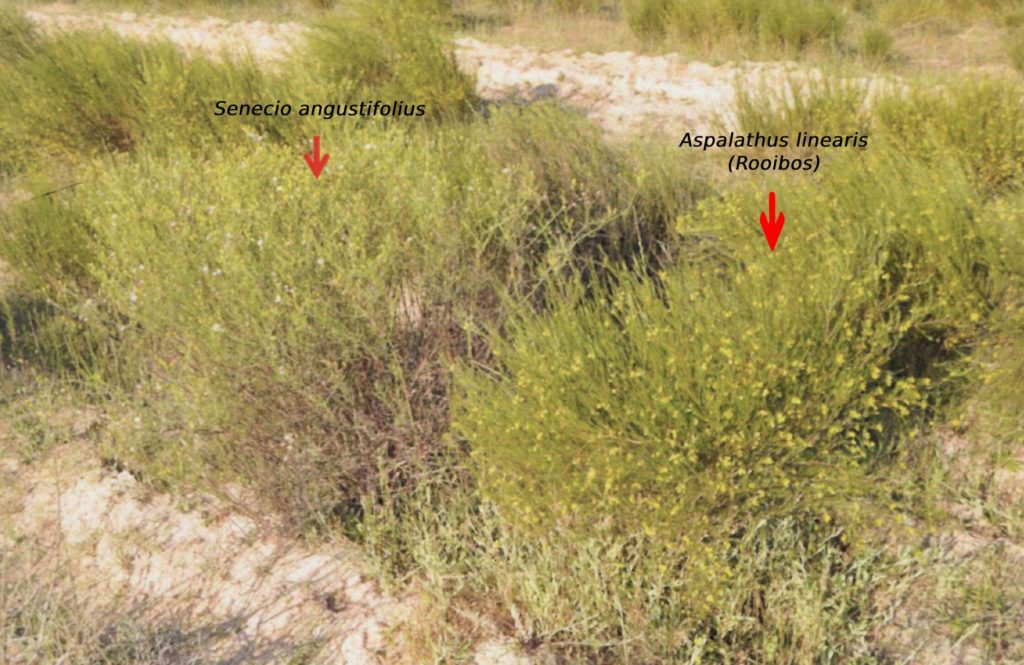
Our Approach? Detection and Removal at Every Stage
Another common way in which rooibos producers eliminate PAs and TAs from their harvests is to identify problem plants in the field during harvest time, and to train harvest workers to be sure not to accidentally harvest such plants as part along with rooibos.
In addition, a second opportunity exists at the tea court itself, to train primary processing workers to identify PA- and TA-containing plants and separate them at the sorting tables, prior to feeding rooibos into the tea-cutting machines. In this way, problem plants are effectively removed from product in the drying facilities.
And this is the very technique applied to our fields at Klipopmekaar since we began farming rooibos. Every year, we employ skilled fieldworkers who have been trained in the detection and removal of Senecio angustifolia and other problem plants. The result is that our rooibos harvests have almost indetectable amounts of PAs and TAs in them.
Nevertheless, every year we dispatch a large number of product samples to a highly-regarded testing laboratory which uses mass spectometry analysis to detect any PAs and TAs, and the level of these, in our products. The results of these tests are provided to those premium tea brand clients who wish to ensure that their orders are confirmed as containing no PAs, as per their qualitative threshold requirements.
These test result don’t mean that we’re resting on our laurels – far from it: every year, we diligently comb every single field on our farm to ensure that as many Senecio plants, or those of any other type known to contain PAs or TAs, are removed so no part of them can make its way into our final rooibos tea products.
As an example, below are a pile of Senecio angustifolia plants removed from our fields at the end of June this year:
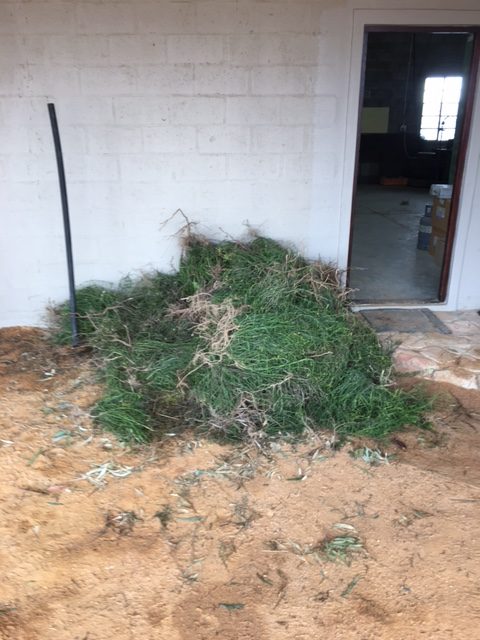
And below is a single rooibos plant (left) in our fields, shown for comparison against a Senecio angustifolia specimen (at right), showing its form, which is quite similar in appearance to that of a rooibos bush:
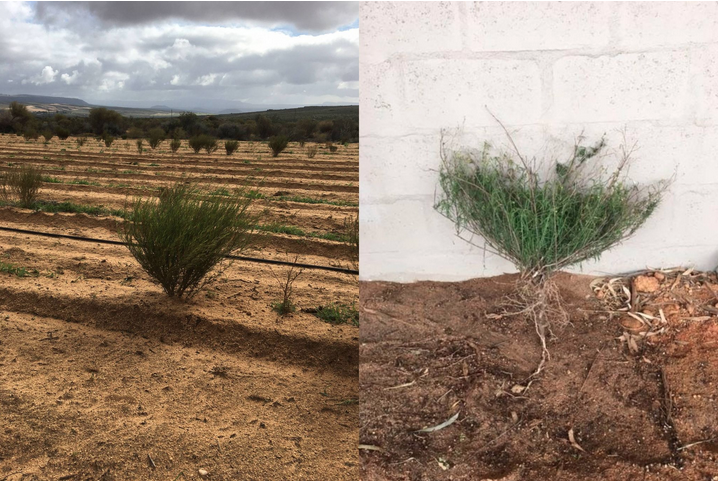
Science And Supply
Over the last few decades, research into PA- and TA-containing plant types has provided a much clearer picture of which plants are usually the cause of poisoning. With PA-bearing plants, thankfully most of these are relatively rare, and constitute only around 3% of all known flowering plants.
Pyrrolizidine alkaloids (PAs) constitute a class of plant toxin associated with disease in humans and animals. They are found in a wide variety of plant species in the world and it is estimated that ∼3% of the world’s flowering plants contain toxic pyrrolizidine alkaloids. The toxin is present in more than 12 higher plant families, among which three families, Compositae (Asteraceae), Boraginaceae, and Leguminosae (Fabaceae), contain most toxic PAs. The wide distribution of plants containing PAs around the globe makes it difficult to prevent human and animal exposure and every year animals and people suffer from acute and chronic PA exposures.(2)
In a 2017 study designed to obtain a comprehensive overview of the PA content in animal- and plant-derived food in the European market, and to provide a basis for future risk analysis, a total of 1105 samples were collected in 2014 and 2015. These comprised milk and milk products, eggs, meat and meat products, (herbal) teas, and (herbal) food supplements collected in supermarkets, retail shops, and via the internet. PAs were detected in a large proportion of plant-derived foods: 91% of the (herbal) teas and 60% of the food supplements contained at least one individual PA.(3)
With TA-bearing plants, awareness of these in agriculture and generally from a historical and medicinal perspective has a long history, and an accompanying body of folklore which is often cautionary in nature. This would be due to the relatively common nature of the families of plants which contain dangerous levels of TAs.
A 2013 study found much the same methods as used in detecting and removing PA-bearing plants at source in order to lessen chances of exposure to TA-bearing plants across the world. That TA-containing plants are widespread and accidental ingestion or inclusion in agricultural products occurs is a known factor, and is the reason that many of the same practices to identify and eliminate these at source have been practiced for many years. As per the study (4):
“There are several analytical methods available for monitoring tropane alkaloids in food and feed but no regulatory limits have been set. The toxic doses are often not clear due to the lack of analytical data in the cases reported. Human foods that potentially contain tropane alkaloids are herbal teas, herbal preparations, blue- or blackberries and edible flowers. Contamination has also been found in beans, buckwheat, soybean and linseed.”
In summary, when clients require it, rooibos producers can ensure that their products meet worldwide standards and concerns related to PAs and TAs. The South African Rooibos Council has defined best practices, and the issue remains one that is given constant attention. Tea brands that are concerned about TAs and PAs are supplied with appropriate product.
It’s worth noting that the term ‘PA- and TA-free’ in relation to describing rooibos products essentially means below an acceptable threshold level (which vary from market to market) or as per tea brand’s qualitative requirements and standards.
If you’re a tea buyer or brand and are looking for organic certified rooibos tea with PAs and TAs either below the acceptable threshold or undetectable if required, you’re welcome to contact our team.
References:
- Senecio angustifolius as the major source of pyrrolizidine alkaloid contamination of rooibos tea (Aspalathus linearis)
B.-E.Van Wyka, M.A.Standerbc, H.S.Longa
South African Journal of Botany, Volume 110, May 2017, Pages 124-131 Pyrrolizidine Alkaloids, Gerardo Ibanez, in Encyclopedia of Toxicology (Second Edition), 2005
- Occurrence of pyrrolizidine alkaloids in animal- and plant-derived food: results of a survey across Europe, Patrick P.J. Mulder, Patricia López, Massimo Castelari, Dorina Bodi, Stefan Ronczka, Angelika Preiss-Weigert & Anja These
Food Additives & Contaminants: Part A, Volume 35, 2018 – Issue 1, 24 Aug 2017, Pages 118-133 - Tropane alkaloids in food: poisoning incidents P. Adamse, H.P. van Egmond, M.Y. Noordam, P.P.J. Mulder and M. de Nijs – Quality Assurance and Safety of Crops & Foods, March 2014; 6 (1): 15-24
